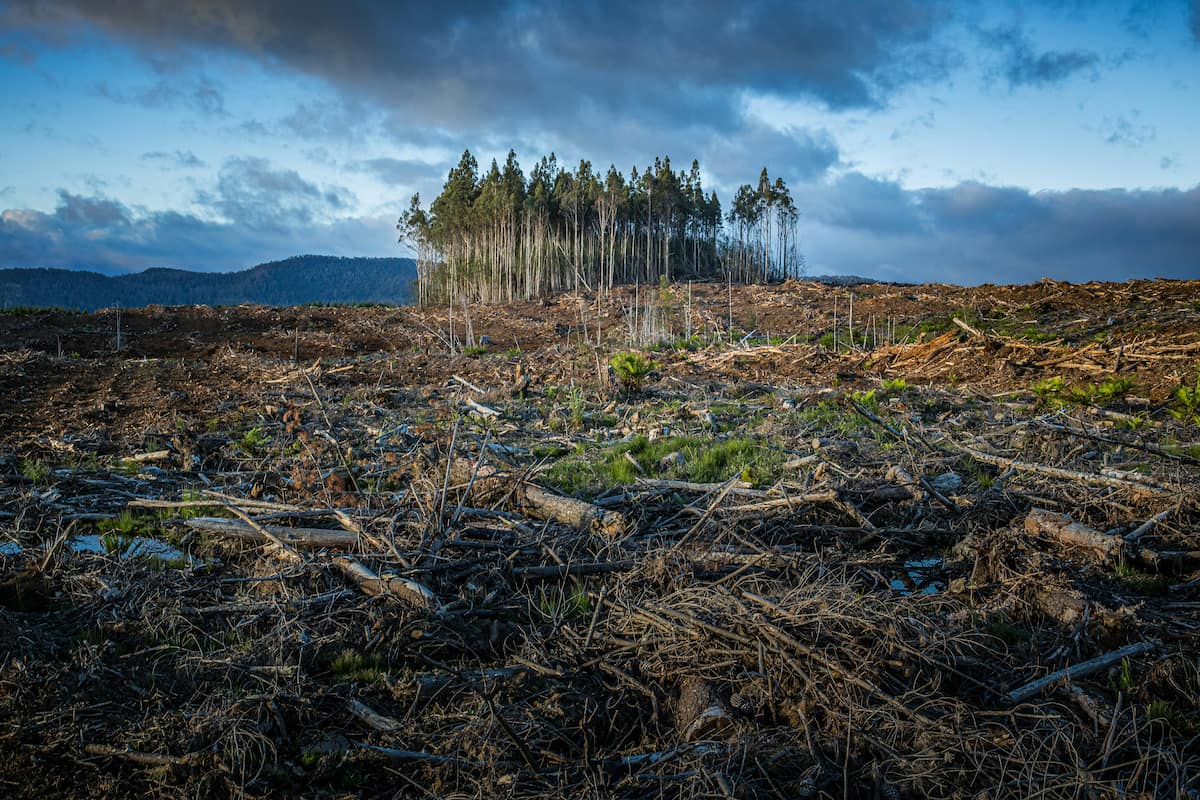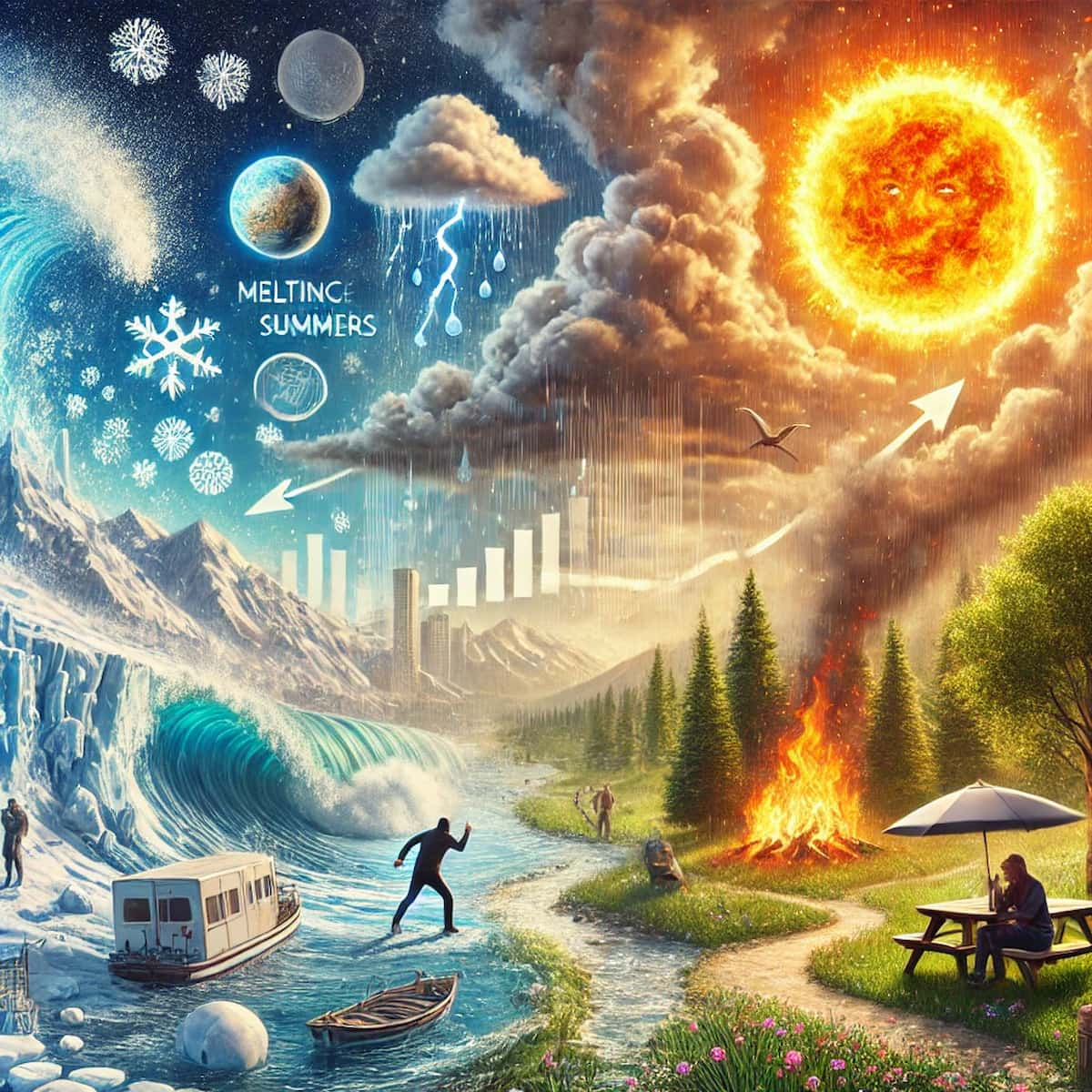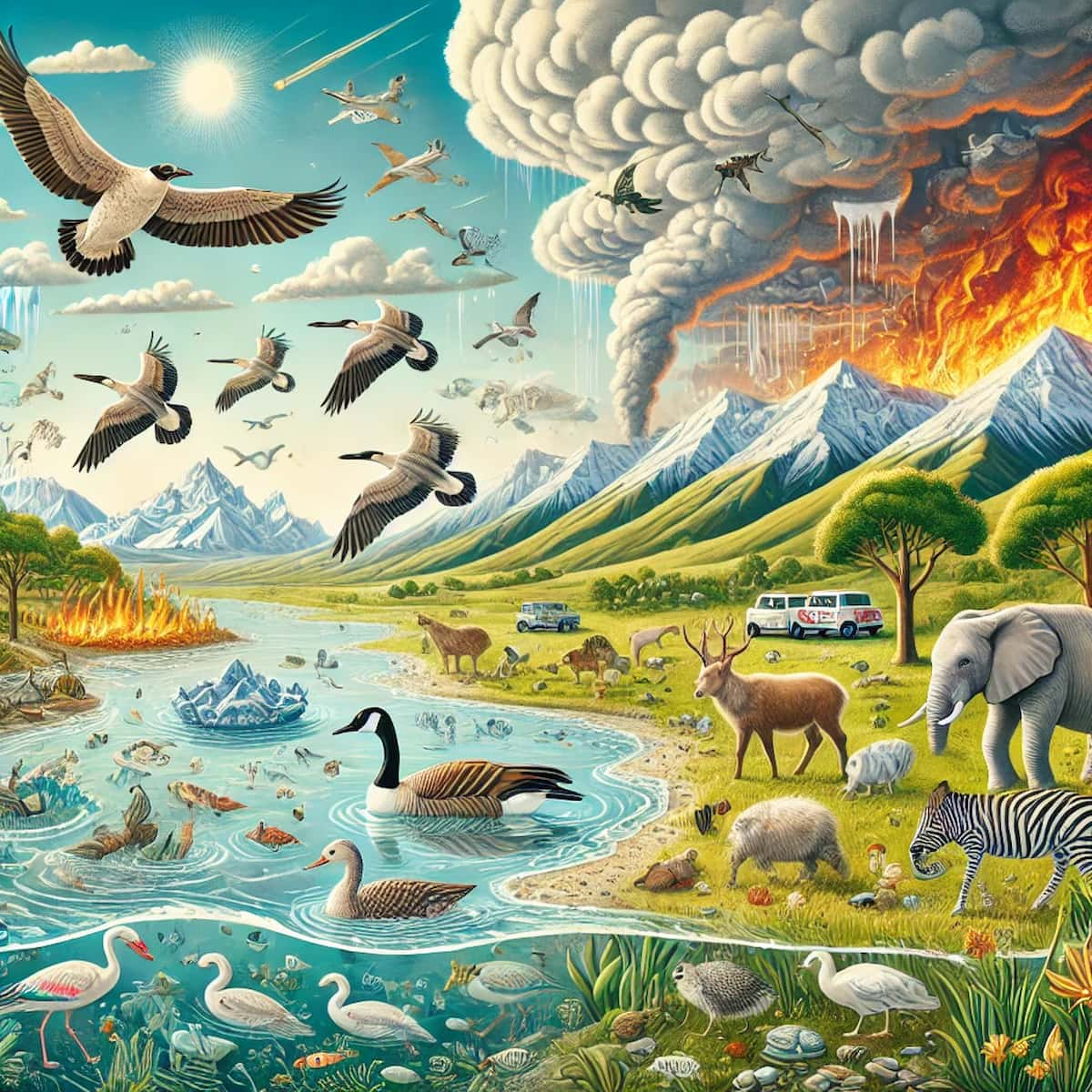
Watch short for this article (5 slides)
Seasons Askew: How Climate Change is Disrupting Earth's Natural Rhythms
Climate change, driven predominantly by human activities like the burning of fossil fuels and deforestation, stands as one of the most formidable challenges of our era. As greenhouse gases trap more heat in the atmosphere, global average temperatures rise, triggering a cascade of effects across the planet. Among the most visible and profoundly felt impacts are the alterations to the predictable cadence of Earth's seasons. The familiar cycle of spring renewal, summer warmth, autumnal transition, and winter chill is becoming less reliable, marked by increasing unpredictability and intensity. How exactly is climate change warping these fundamental natural rhythms, and what are the cascading consequences for ecosystems and human civilization?

Photo by Matt Palmer on Unsplash - Climate change blurs the lines between traditional seasons.
Understanding Earth's Seasons: The Foundation
Before exploring the changes, it's crucial to remember why seasons occur. Earth experiences distinct seasons primarily because its rotational axis is tilted about 23.5 degrees relative to its orbital plane around the Sun. As Earth orbits, different parts of the planet receive more direct sunlight (leading to summer) or more slanted, less intense sunlight (leading to winter). This astronomical cycle dictates the fundamental rhythm of temperature changes, daylight hours, and associated weather patterns throughout the year. Climate change, however, interferes with the *expression* of these seasons.
Warming Trends: Shorter Winters, Longer, Hotter Summers
One of the most direct consequences of a warming planet, which has heated by approximately 1.1°C to 1.2°C (about 2°F) on average since the pre-industrial era (Source: NASA Global Climate Change), is the alteration of seasonal temperature profiles.

- Milder, Shorter Winters: Average winter temperatures are rising in many regions. This leads to:
- Reduced Snowpack: Less precipitation falling as snow and earlier spring melt. This is critical in regions relying on mountain snowpack for freshwater supply (e.g., Western US, parts of Asia).
- Fewer Frost Days: The number of days below freezing is decreasing, impacting plant dormancy cycles and allowing some pests or invasive species to survive winter more easily.
- Later Start, Earlier End: Winters effectively start later and end sooner, compressing the cold season.
- Hotter, Longer Summers: Rising average temperatures disproportionately increase the likelihood and intensity of extreme heat during summer. This results in:
- More Frequent and Intense Heatwaves: Periods of abnormally hot weather become more common, last longer, and reach higher peak temperatures, posing significant health risks and straining energy grids.
- Extended Warm Season: The period defined by summer-like temperatures expands, encroaching into traditional spring and autumn months.
Timing is Everything: Shifting Phenology and Ecological Mismatches
Climate change is causing significant shifts in the timing of recurring biological events driven by seasonal cues, a field known as phenology. Plants and animals rely on temperature, precipitation, and daylight length to time critical life cycle events like flowering, leafing out, migration, and breeding.
- Advancing Springs: Across many temperate regions, spring events are occurring progressively earlier. Studies show leaves appearing, flowers blooming, and birds migrating days or even weeks earlier than they did decades ago. This is primarily driven by earlier warming trends surpassing temperature thresholds that trigger these events. (Source: USA National Phenology Network).
- The Danger of Mismatch: While an early spring might seem pleasant, it can lead to critical phenological mismatches. Different species respond to different cues (some more to temperature, others to day length) or respond at different rates. This can desynchronize tightly linked ecological interactions:
- Plant-Pollinator Mismatch: Flowers may bloom before their primary pollinators (bees, butterflies) emerge or arrive, reducing pollination success for the plants and food availability for the pollinators.
- Predator-Prey/Herbivore-Plant Mismatch: The timing of peak food availability (e.g., insect emergence) may no longer align with the peak needs of predators raising young (e.g., birds needing caterpillars to feed nestlings).
- False Springs and Frost Damage: Earlier budding or flowering makes plants more vulnerable to damage from late spring frosts, which can still occur even as average temperatures rise.
- Delayed Autumns: In some areas, warmer temperatures extend later into the year, delaying typical autumn events like leaf color change and dormancy onset. While potentially extending the growing season for some crops, this can also increase exposure to late-season pests, diseases, or damaging early winter freezes before plants have properly hardened off.
Intensified Extremes: Weather Whiplash within Seasons
Climate change isn't just making seasons warmer overall; it's increasing the volatility and intensity of weather events *within* seasons.
- More Intense Precipitation Events: A warmer atmosphere holds more moisture (about 7% more per degree Celsius of warming, governed by the Clausius-Clapeyron relationship). When conditions are right for precipitation, this extra moisture can lead to heavier downpours, increasing the risk of flash flooding and overwhelming drainage systems, even in regions experiencing overall drying trends. (Source: IPCC AR6 WG1 Ch 11 - Extremes).
- Increased Drought Severity: While some areas see more intense rain, others experience longer and more severe droughts. Higher temperatures increase evaporation from soil and water bodies, exacerbating dryness even if rainfall totals don't change significantly. Altered atmospheric circulation patterns also play a role in shifting precipitation patterns, leading to persistent dry spells in regions like the Southwestern US or parts of the Mediterranean.
- Stronger Tropical Cyclones (Hurricanes, Typhoons): Warmer sea surface temperatures provide more energy (latent heat) to fuel tropical cyclones. While the overall frequency might not necessarily increase everywhere, evidence suggests a trend towards higher peak wind speeds, more rapid intensification, and heavier rainfall associated with these storms, making them potentially more destructive. Rising sea levels also worsen coastal flooding from storm surges. (Source: NOAA GFDL - Global Warming and Hurricanes).
- Wildfire Season Changes: Hotter, drier conditions, often resulting from altered seasonal precipitation and earlier snowmelt, contribute to longer and more intense wildfire seasons in many regions (e.g., Western US, Australia, Mediterranean), leading to devastating ecological and air quality impacts.
Cascading Impacts on Ecosystems and Wildlife
These seasonal shifts ripple through entire ecosystems, challenging the survival strategies of countless species.

- Range Shifts: As climate zones shift poleward and upward in elevation, species are forced to migrate to track their preferred temperature and environmental conditions. Species unable to move fast enough or blocked by geographical barriers face decline or extinction.
- Habitat Loss: Reduced snowpack affects alpine and tundra ecosystems. Arctic sea ice decline directly threatens species like polar bears, walruses, and seals. Coral reefs suffer mass bleaching events due to marine heatwaves.
- Disrupted Hibernation/Dormancy: Warmer winters can interfere with the hibernation cycles of animals or the necessary chilling periods for some plants and seeds.
- Altered Aquatic Systems: Changes in runoff timing, warmer water temperatures, and altered stratification affect fish populations, aquatic insects, and overall freshwater ecosystem health.
Broad Societal Consequences
Human systems, developed around historically predictable seasonal patterns, face significant disruption:
- Agriculture and Food Security: Shifting growing seasons, increased risk of crop failure due to drought, heat stress, floods, or frost damage, changes in water availability, and shifts in pest/disease ranges all threaten global food production and stability.
- Human Health: Increased risk of heatstroke and heat exhaustion during intense heatwaves. Longer and more intense allergy seasons due to altered pollen patterns. Expansion of ranges for vector-borne diseases (e.g., Lyme disease carried by ticks, Zika/dengue carried by mosquitoes) into new areas. Respiratory issues exacerbated by wildfire smoke and ground-level ozone formed in hot conditions.
- Water Resource Management: Changes in snowmelt timing and precipitation patterns create major challenges for managing reservoirs, ensuring drinking water supply, and allocating water for agriculture and industry.
- Infrastructure Risks: More intense rainfall stresses stormwater systems; sea-level rise combined with stronger storms threatens coastal infrastructure; extreme heat strains energy grids and transportation networks.
- Economic Impacts: Sectors like winter tourism (ski resorts), fisheries, forestry, and insurance face significant disruption and increased costs.
- Cultural Disruption: Traditional practices, festivals, and ways of life tied to specific seasonal events (e.g., harvest times, ice fishing, seasonal migrations) are being altered or lost.
Conclusion: Adapting to a New Seasonal Reality
Climate change is fundamentally redrawing the seasonal map. We are witnessing not just a general warming, but a complex disruption of timing, intensity, and predictability across the annual cycle. Warmer, shorter winters bleed into earlier springs, leading to ecological mismatches. Summers grow longer and fiercer, punctuated by more intense heatwaves, downpours, and potentially stronger storms. These shifts cascade through ecosystems and human societies, impacting everything from food and water security to health and cultural identity.
Addressing this challenge requires a dual approach: urgently reducing greenhouse gas emissions globally to limit the extent of future disruption (mitigation) and simultaneously developing strategies to cope with the seasonal changes already underway and those yet to come (adaptation). Recognizing that the familiar rhythms of the seasons are changing is the first step toward building resilience in a world increasingly defined by climatic instability.